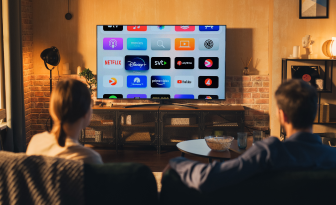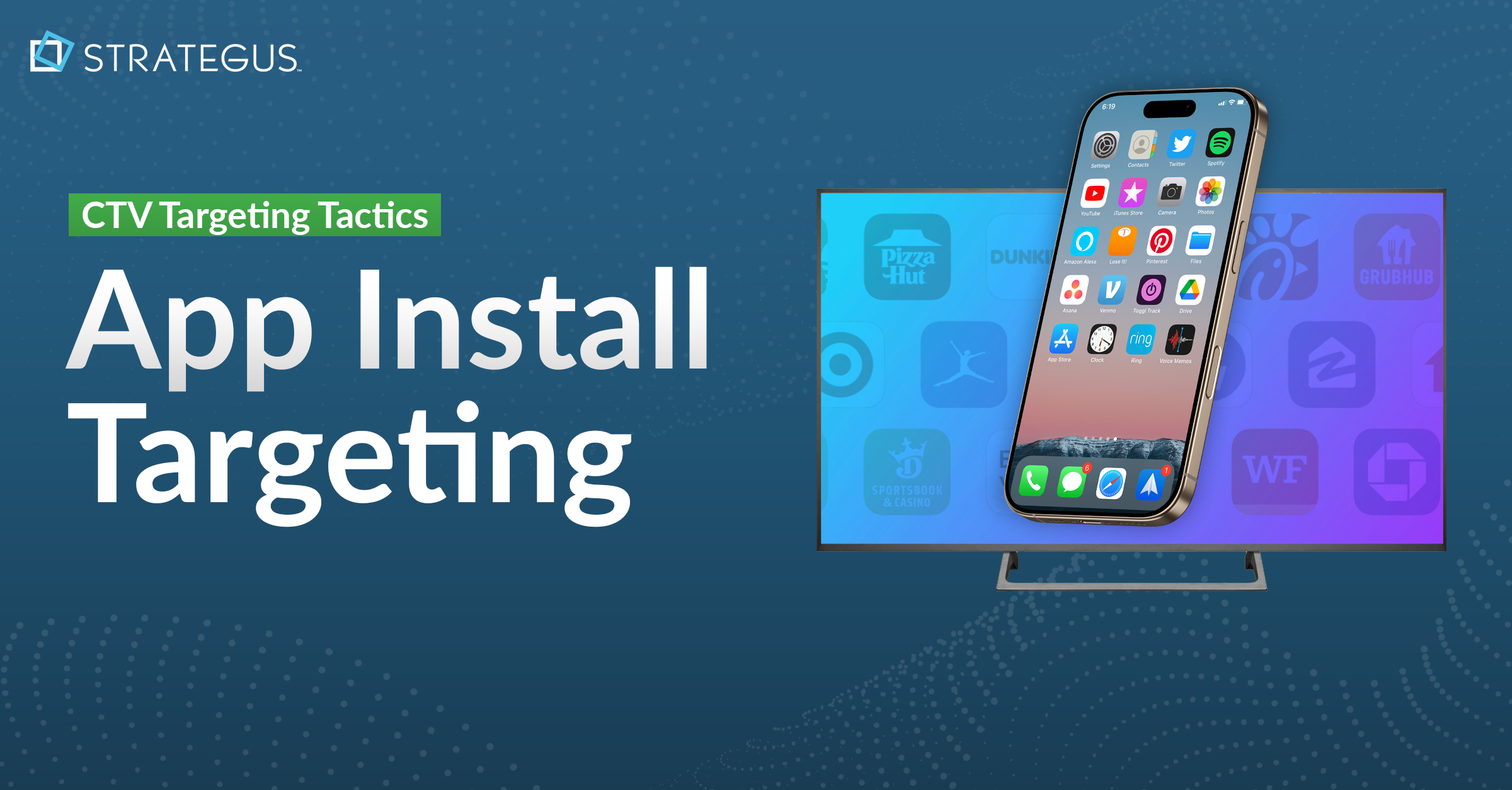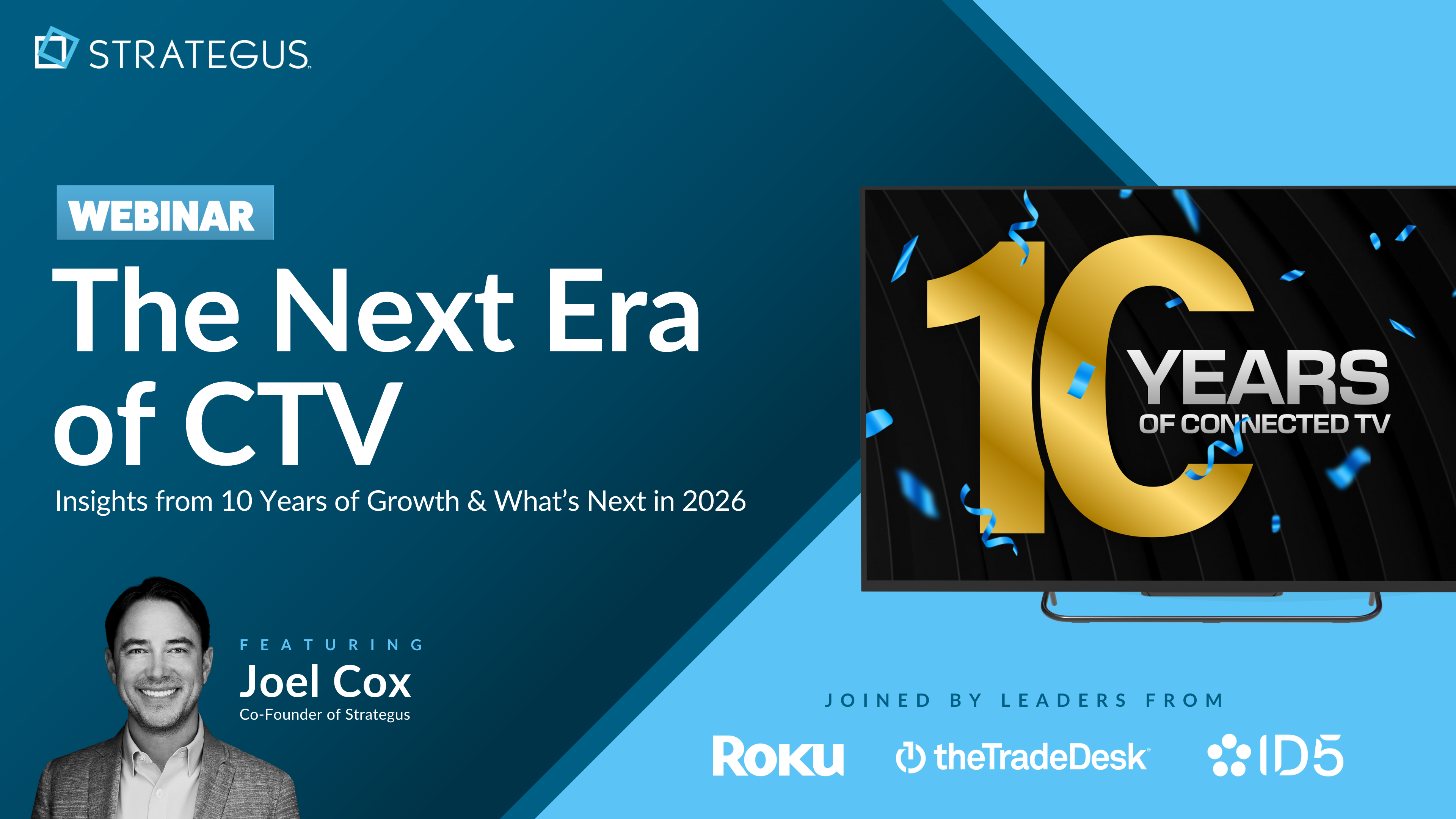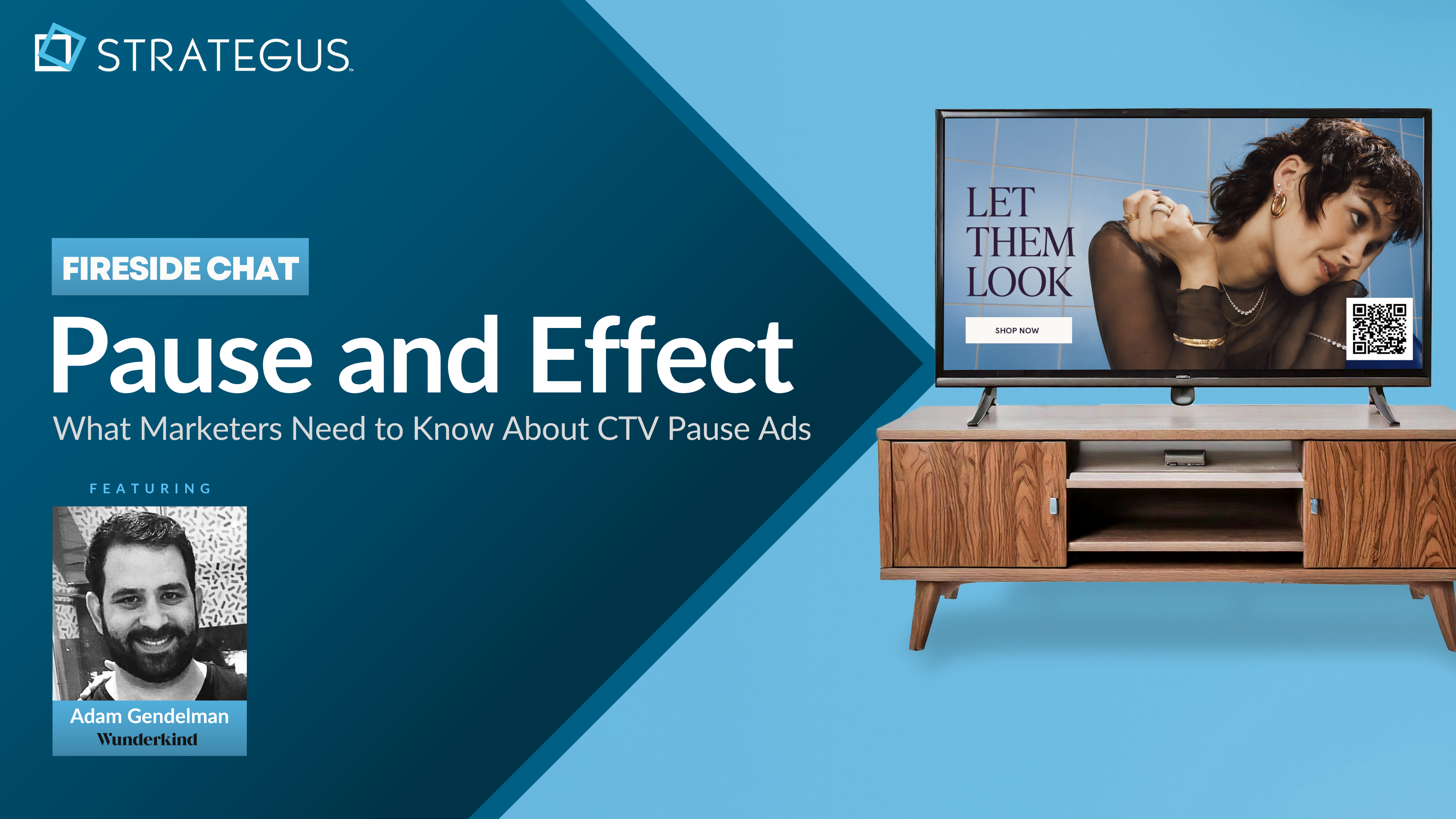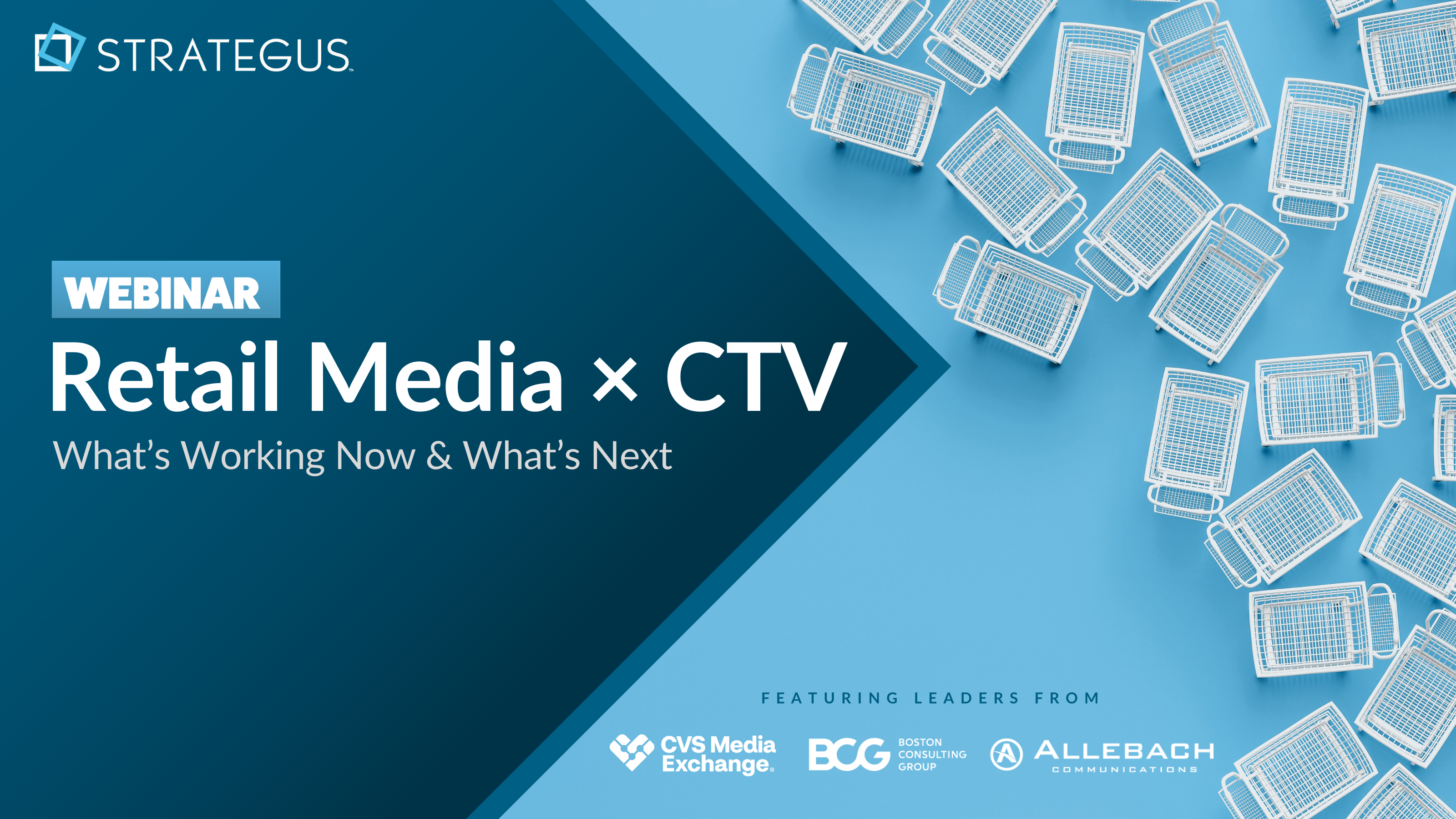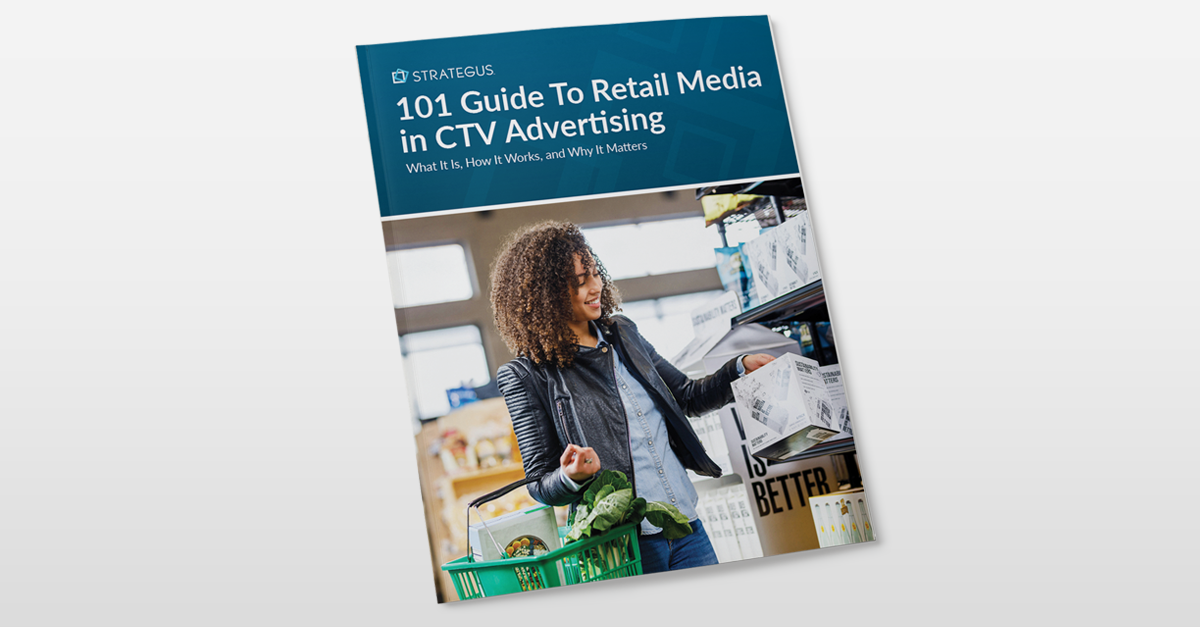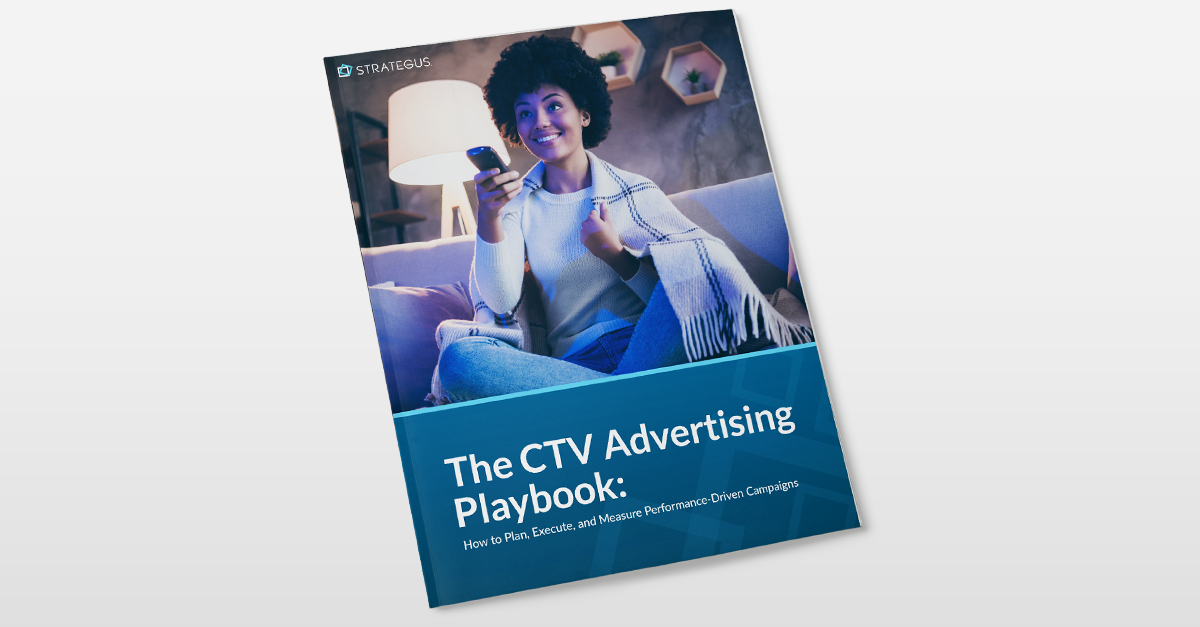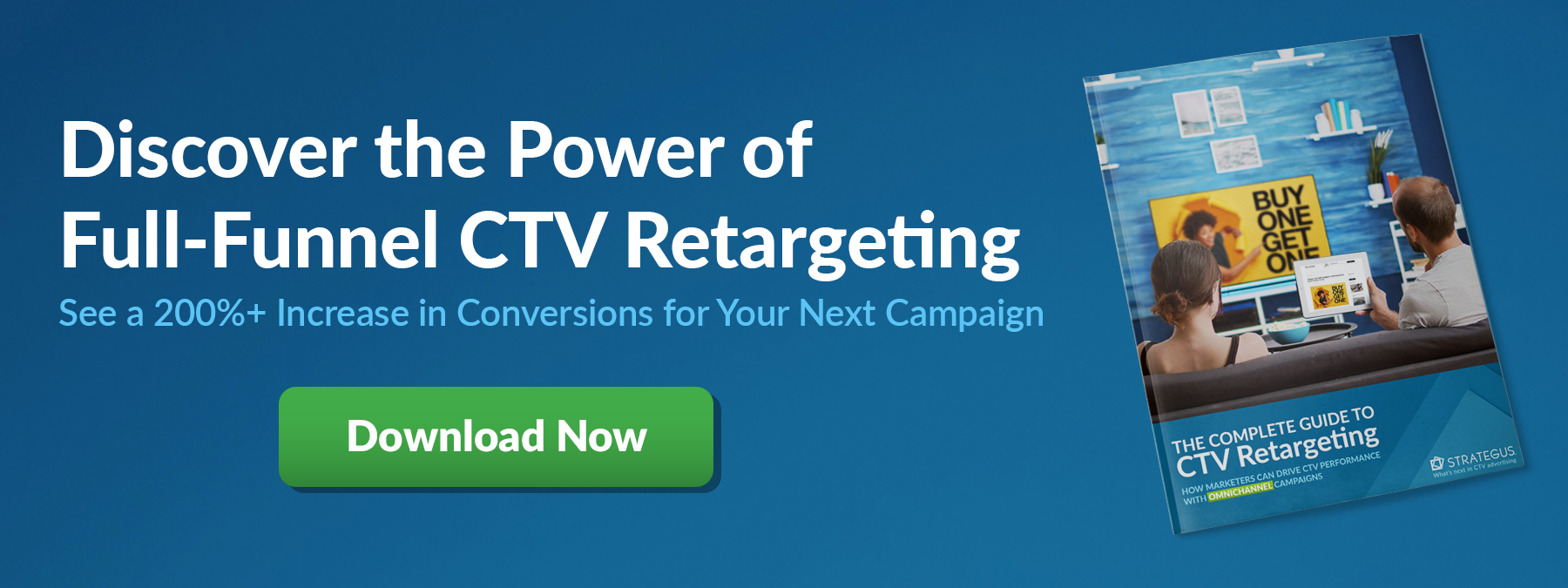- Home
- Strategus Blog
- How to Make a KILLER Television Marketing Strategy
How to Make a KILLER Television Marketing Strategy
 Traci Ruether
Traci Ruether
8 minutes read

Netflix used to be our commercial-free sanctuary. Now? Between Hulu, Max, Disney+, and whatever new platform launched this week, keeping track of where to advertise feels like a part-time job. And with viewers bouncing between their TV, tablet, and phone like they're playing digital ping-pong, the traditional TV marketing playbook might as well be written in hieroglyphics.
It’s easy to be intimidated by all these changes, but this chaos is actually an opportunity. The same fragmentation that makes TV advertising complex also makes it incredibly powerful. When you know how to work your way through the industry, you can reach viewers with surgical precision instead of the old spray-and-pray approach.
This article breaks down exactly how to build a TV marketing strategy that thrives in the current streaming-dominated world. We've studied campaigns from brands that turned confusion into conversion, analyzing what separates the winners from those still stuck in the broadcast era. You'll learn how to use programmatic buying, create ads people actually want to watch, and track performance across every screen.
Key Takeaways
- Streaming TV allows for precise, viewer-level targeting, interactive ad formats, and real-time performance metrics far beyond traditional broadcast capabilities.
- Effective TV campaigns start with specific business goals and align platform selection, timing, and creative strategy to maximize impact.
- Story-driven ads that emotionally connect with viewers outperform hard-sell tactics, especially in today’s ad-fatigued landscape.
- Continuous testing, performance tracking, and optimization are essential; launching a campaign is just the beginning, not the end.
- Integrating TV with digital (retargeting, multi-device tracking) enhances reach and conversion, while premium inventory and fraud protection safeguard your investment.
- Strategus provides hands-on support, ad fraud prevention, and end-to-end strategy development; helping brands turn fragmented TV into focused performance. Talk to a Strategus expert to learn more about how we can help.
What Makes Modern Streaming TV Advertising Different from Traditional Advertising
While traditional TV advertising feels like throwing darts in the dark, modern streaming brings precision tools to the table. Here's what sets streaming apart from the broadcast era:
- Viewer-Level Targeting: Your Ads Follow Individual Preferences: Traditional TV targets demographics like "women 25-54" watching daytime television. Streaming platforms know if someone just binged three cooking shows and serve them kitchen appliance ads. This granular targeting means your outdoor gear ads reach actual hikers, not just everyone watching the evening news.
- Real-Time Performance Metrics: Finally, Actual Data: Remember waiting weeks for Nielsen ratings? Streaming delivers instant insights. You can see exactly how many people watched your entire ad, clicked through, or even made a purchase. This immediate feedback loop lets you optimize campaigns on the fly instead of crossing your fingers until the quarterly report arrives.
- Flexible Creative Formats: Beyond the 30-Second Spot: Traditional TV locked you into rigid commercial breaks. Streaming offers interactive ads, shoppable content, pause ads, and custom integrations. Viewers can click to learn more, save products for later, or even make purchases without leaving their show.
- Cross-Device Continuity: One Campaign, Every Screen: Your campaign seamlessly follows viewers from their smart TV to their phone to their laptop. This connected experience was impossible with traditional broadcasting, where TV and digital lived in separate silos.

7 Steps to Create the Perfect Marketing Strategy
Television marketing doesn't follow a rigid formula, but successful campaigns share common elements. Here's how winning brands build strategies that deliver.
Step 1: Set Goals That Actually Matter
"Increase brand awareness" isn't a goal. It's a wish. Real television marketing strategies tie every campaign to business outcomes.
A regional pizza franchise came to us wanting "more visibility." We pushed deeper. What they really needed was foot traffic during slow Tuesday and Wednesday nights. That specificity changed everything. Instead of generic brand ads, we created targeted CTV campaigns that ran Monday through Wednesday, promoting mid-week specials to families within a 5-mile radius of each location.
The focused approach delivered 12,195 additional store visits; a 31% increase in foot traffic among viewers who saw the ads. Specific goals create specific results.

Step 2: Choose Your Battlefield Wisely
Television isn't one channel anymore. It's an ecosystem of broadcast, cable, streaming services, and connected devices. Each serves different purposes.
Live sports and events on broadcast TV create urgency. A roofing company sponsoring weather segments before storm season capitalizes on immediate need. Streaming platforms offer precision targeting. That same roofing company can run different creative to homeowners versus renters, adjusting messages based on property data.
The key is matching platform strengths to campaign objectives. Need mass reach for a product launch? Traditional broadcast during prime time delivers. Want to find specific customers ready to buy? CTV's targeting capabilities let you reach renovation enthusiasts watching HGTV who recently searched for contractors.
Step 3: Create Stories, Not Commercials
People don’t like being sold to anymore. Ad fatigue is a bigger problem now than ever and the best TV ads don't feel like ads. They feel like mini-movies that happen to feature your brand.
Study The Farmer's Dog Super Bowl commercial. No product shots. No feature lists. Just a story about life with a beloved pet that happened to mention dog food at the end. It generated massive brand recall because viewers connected emotionally before they connected commercially.
Your creative doesn't need Super Bowl budgets to tell great stories. A local HVAC company created a simple spot showing a technician arriving at an elderly woman's home during a heatwave. No dramatic music. No special effects. Just genuine concern and professional service. It outperformed their previous "10% off" promotions by 400%.
Step 4: Time Your Ads
When you run ads matters as much as where. This goes beyond picking prime time slots.
Consider the viewer mindset throughout the day. Morning news viewers planning their day respond to different messages than late-night comedy watchers unwinding. Food delivery services see better results during pre-dinner hours when hunger strikes. B2B software companies find success during morning business news when decision-makers are thinking strategically.
Step 5: Invest Wisely in Production
Quality matters, but expensive doesn't always mean effective. The key is balancing production value with strategic impact.
Premium brands need polished visuals that reflect their positioning. But local businesses often see better results from authentic, relatable content. A well-lit interview with a satisfied customer can outperform a glossy commercial that feels disconnected from reality.
Focus your production budget on elements that directly support your message. If you're selling trust, invest in genuine testimonials. If you're selling excitement, prioritize on-the-fly editing. Every production decision should get you closer to your strategic goal.
Step 6: Measure Like Your Business Depends on It
Why? Because it does.
Modern TV advertising provides data that would make digital marketers jealous.
Attribution technology tracks the complete journey from ad exposure to purchase. You see which creative drives website visits, which time slots generate phone calls, and which channels deliver the best cost per acquisition. This isn't guesswork; it's basic math.
Set up tracking before you launch, define success metrics that align with business goals, and monitor performance daily and adjust quickly. The beauty of modern TV advertising is the ability to optimize in real-time, shifting budget to what works and cutting what doesn't.
Step 7: Optimize Relentlessly
Launch day isn't the finish line. It's just the start. Successful TV strategies continuously change based on performance data.
A/B test different creative versions to see what resonates. Adjust frequency when you notice diminishing returns. Shift dayparts based on response rates. Move budget between channels as you identify top performers. This constant refinement separates good campaigns from great ones.
How to Drive Actual Revenue From Your Marketing Strategy
Good marketing strategies share three characteristics: they're customer-focused, data-driven, and constantly improving. Here's how to ensure yours meets these criteria.
Make TV and Digital Best Friends
Television and digital channels multiply each other's impact. TV builds broad awareness and credibility. Digital provides targeted follow-up and easy conversion paths.
Picture this: A viewer sees your TV commercial during their favorite show. Later, while browsing social media, they encounter a retargeted display ad with a special offer. The combination of big-screen impact and personalized follow-up drives higher conversion rates than either channel alone.
Cross-device retargeting makes this seamless. Our technology identifies households exposed to your TV ads and serves complementary digital ads across their devices. It's like having a conversation that continues from the living room to the smartphone.
Embrace Premium Inventory
Not all TV inventory is created equal. Premium content attracts engaged viewers in the right mindset for your message. It also protects your brand from appearing alongside questionable content.
For example, Strategus partners with over 200 premium publishers to make sure your ads run during high-quality programming. Think HGTV for home improvement brands, Discovery for adventure gear, or local news for community-focused businesses. The right context can significantly improve the reception of your message.
Protect Against Ad Fraud
Connected TV's growth attracted bad actors looking to exploit advertisers. Fake devices, bot traffic, and pixel stuffing waste budgets on non-existent viewers. It's a real concern that requires real solutions.
We integrate with industry leaders like DoubleVerify and HUMAN to scan and block ad fraud before purchase. Our senior Ad Operations team monitors campaigns continuously, catching anomalies that automated systems might miss. Your budget reaches real people, not bots.
Scale Smart, Not Fast
The temptation to go big immediately is strong. But, smart scaling based on proven results beats aggressive expansion every time.
Start with focused test campaigns in select markets or demographics. Measure results carefully. Identify what works. Then expand methodically, applying lessons learned to new markets. This approach minimizes risk while maximizing learning.
Partnering with Strategus for Better, Faster Results
Building a killer TV strategy requires more than good ideas. It demands deep platform knowledge, vendor relationships, and optimization expertise. That's where we come in.
At Strategus, we're not a hands-off platform where you figure things out alone. We're your hands-on partner, working alongside you daily to work our way to success. Our team handles the complex technical work while you focus on running your business.
We've helped sports teams sell hundreds of thousands in tickets. We've driven measurable foot traffic increases for restaurants. We've connected B2B brands with decision-makers at scale. Each success story started with a strategy tailored to specific business goals.
Ready to build a TV strategy that delivers real results? Talk to a Strategus expert to learn more about how we can help.

Traci Ruether is a content marketing consultant specializing in video tech. With over a decade of experience leading content strategy, she takes a metrics-driven approach to storytelling that drives traffic to her clients' websites. Follow her on LinkedIn at linkedin.com/in/traci-ruether or learn more at traciruether.com.
Strategus is a managed services connected TV(CTV) advertising agency with over 60,000+ campaigns delivered. Find out how our experts can extend your team and drive the result that matter most.
Talk to an Expert
Seeking a Custom CTV Strategy That Delivers?
What to read next
App Event Tracking: Tie Mobile App Activity to CTV Campaigns
Let’s say you’re running a CTV campaign for a personal finance app.
5 minutes read

Stop Guessing Who Your Audience Is — Let Their Apps Tell You
Connected TV (CTV) targeting often falls in one of two camps.
8 minutes read
See Who Bought After Your Ad + How Much They Spent
You can’t improve what you can’t measure. And for years, that’s been a major problem with TV advertising.
4 minutes read

First-Party Attribution: Match Ads to Sales With CRM Data
The value of first-party data continues to grow.
7 minutes read

